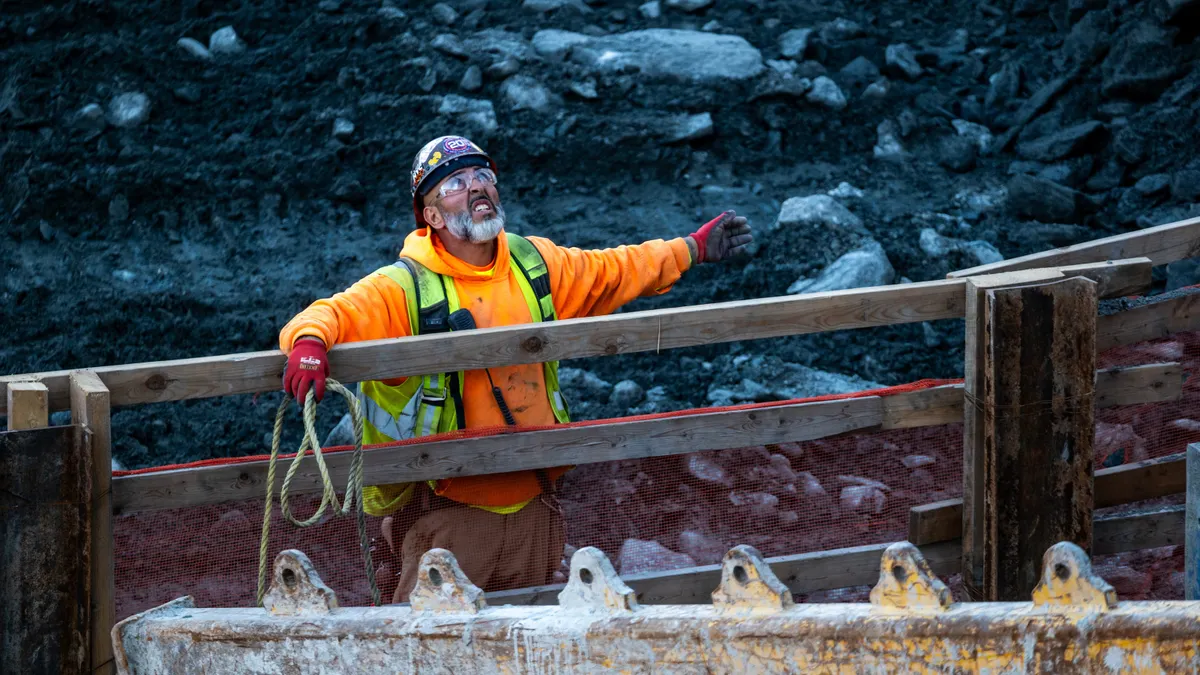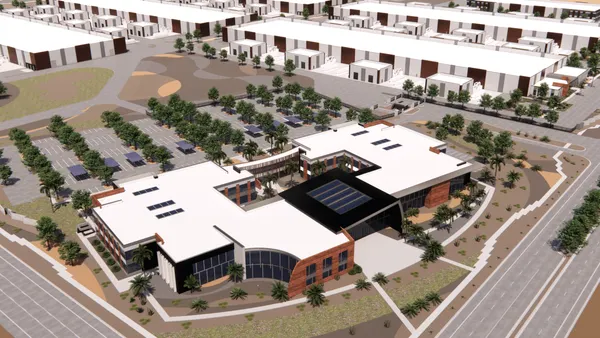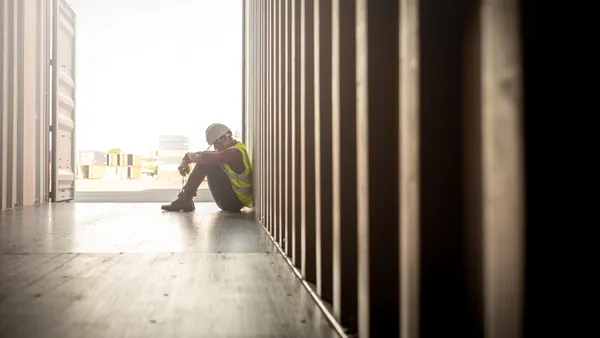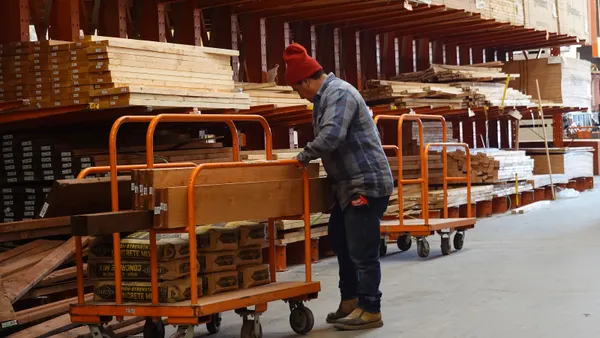Good news kept its footing for contractors in September as project stress declined for the third consecutive month, according to the latest data from Cincinnati-based ConstructConnect.
The Project Stress Index, a measure of construction projects that have been delayed or abandoned, dipped 0.6% from August to September. The sustained decline follows steep midyear volatility and brings overall stress to just 4% above the 2021 baseline, said Devin Bell, associate economist at ConstructConnect.
“Bid date delays and abandonments improved measurably over the month, though they were mostly offset by growth in on-hold activity,” Bell told Construction Dive. “The downward trend in the index has persisted through economic and labor uncertainty, though recent activity may be benefitting from a change in interest rate outlooks.”
The latest report showed improvement from the summer months, as bid date delays fell 3.8% in September, coupled with a 9.6% drop in abandonments. However, projects placed on hold jumped 19.5% after record lows earlier this year.
But private construction still shows a strong level of resilience. For example, private project abandonments fell 8% year over year and on-hold activity dropped 54.5% compared to the same period in 2024. Bell said overall private construction, which spiked after President Donald Trump first unveiled tariffs this spring, has largely stabilized since.
“Private sector abandonment activity increased following Liberation Day tariffs in April, then declined over the following months,” said Bell. “As private activity normalized, public sector abandonments rose rapidly, peaking in August before falling this month.”
Public abandonments climbed 16.7% year over year in September, along with a 5.8% uptick in public projects placed on hold. Bell attributed those increases to disruptions stemming from federal funding cuts, particularly in education and municipal construction.
That weakness in public activity could also intensify. The report’s data runs through the end of September, meaning effects from the Oct. 1 federal government shutdown are not yet reflected.
“Public and private sector abandonments have followed staggered patterns this year, each experiencing spikes followed by partial recoveries,” Bell told Construction Dive. “Private sector abandonments responded to material cost uncertainty following the Liberation Day tariffs, while public projects have faced disruptions, including the pause on the Infrastructure Investment and Jobs Act.”
Those issues regarding federal funding add to broader challenges facing the construction industry. About one in four contractors report delayed or canceled projects due to tariffs, according to Associated Builders and Contractors. Meanwhile, nearly half cite labor shortages as the leading cause of project slowdowns, according to a survey released Aug. 28 by the Associated General Contractors of America and the National Center for Construction Education and Research.
Bell added those funding issues and high costs will challenge project viability. For that reason, activity may slow until a more favorable outlook emerges.














